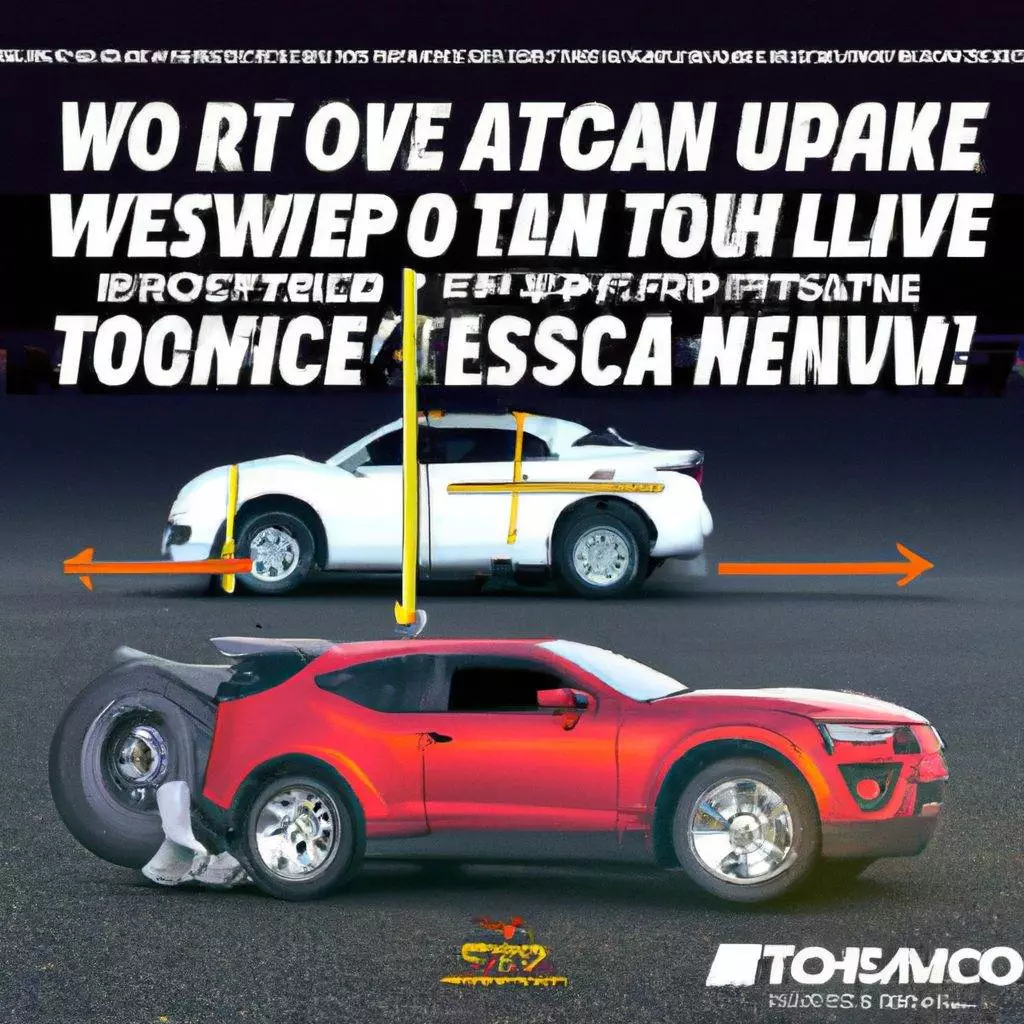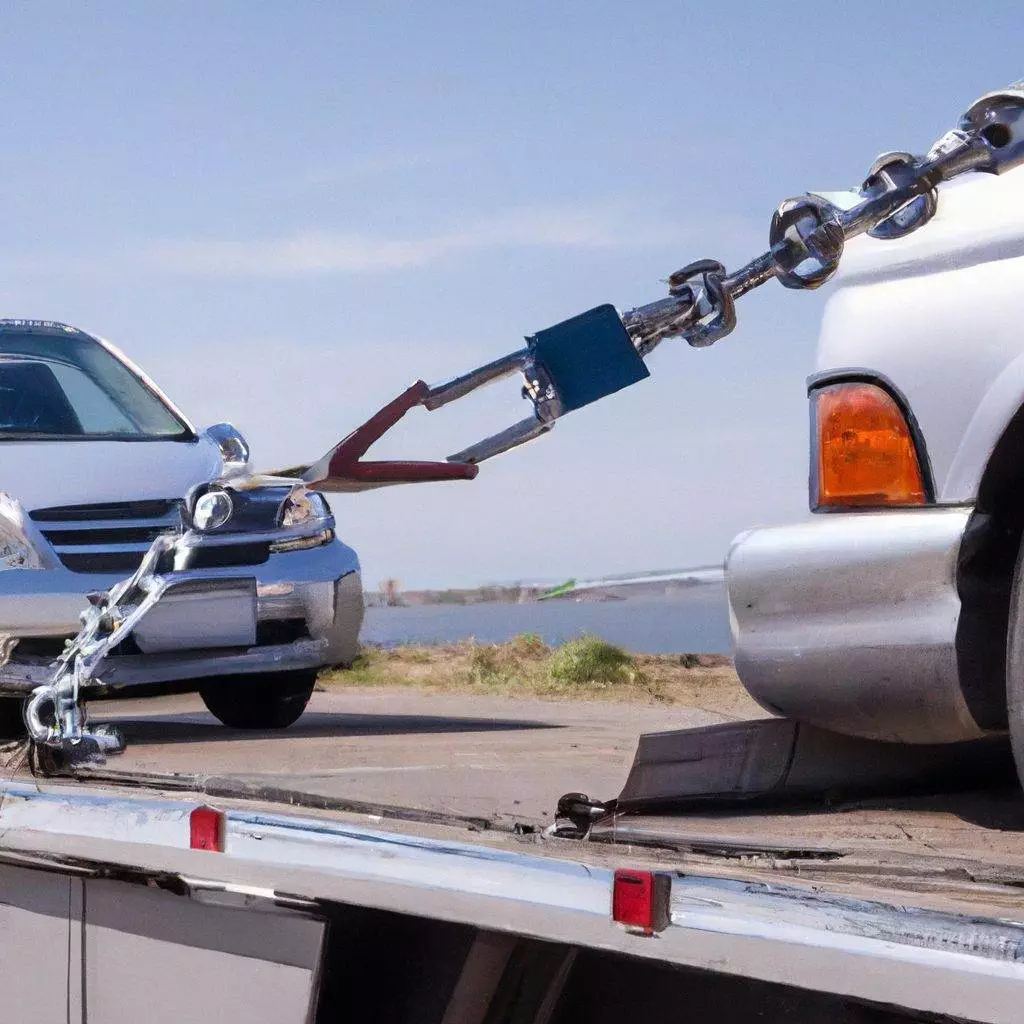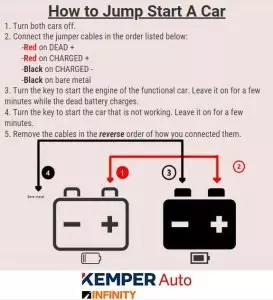In the world of automotive transportation, ensuring the safety and protection of your beloved four-wheeled companion is of utmost importance. If you find yourself in the position of needing to tow your car, you may have various concerns regarding its well-being throughout the process. From the risk of damage to potential mishaps, it is crucial to have a comprehensive understanding of how to protect your car while towing. In this article, we will explore some expert strategies and essential tips to safeguard your vehicle and alleviate any apprehension that may arise during this endeavor.
Choosing the Right Tow Vehicle
Consider the weight capacity
When it comes to towing a car, one of the most important factors to consider is the weight capacity of the tow vehicle. To ensure a safe and successful tow, it is crucial that the tow vehicle has the ability to handle the weight of the car being towed. Exceeding the weight capacity can put unnecessary strain on the vehicle’s engine, transmission, and brakes, leading to potential damage or accidents. Therefore, it is essential to thoroughly examine the tow vehicle’s weight capacity before embarking on any towing journey.
Check the vehicle’s towing features
Apart from the weight capacity, it is vital to assess the tow vehicle for its towing features. Different vehicles have varying towing capabilities, so it is crucial to choose a vehicle that has the necessary towing features for your specific needs. This includes components such as a hitch receiver, wiring harness for trailer lights, and stability control systems. Taking the time to check and understand the tow vehicle’s towing features will contribute significantly to the safety and efficiency of the towing process.
Ensure proper hitching
Proper hitching is a crucial step in protecting your car during towing. It is essential to choose the appropriate hitch by considering important factors such as the weight of the vehicle being towed, the type of trailer or caravan being used, and the towing capacity of the tow vehicle. A secure and proper hitch connection ensures stability, preventing any unwanted movement or detachment during the towing process. Additionally, checking the hitch connection before setting off on the journey is imperative to avoid any potential accidents or damage.
Using the Correct Tow Equipment
Select the appropriate tow hitch
Selecting the appropriate tow hitch is a crucial aspect of protecting your car while towing. There are various types of tow hitches available, including ball mounts, fifth-wheel hitches, and gooseneck hitches. Each type is designed for different towing needs and vehicle configurations. It is essential to select the correct tow hitch that matches your vehicle’s towing capacity and the weight of the trailer or caravan being towed. By using the appropriate tow hitch, you can ensure a secure and safe towing experience.
Use safety chains
Safety chains are an essential component of any towing setup. They provide an additional layer of security in case the hitch connection fails. When properly attached, safety chains can prevent the trailer or caravan from completely detaching from the tow vehicle, minimizing the risk of accidents or damage. It is crucial to cross the chains under the hitch, allowing them to catch the trailer or caravan if it becomes unhitched. Regularly inspecting the condition and strength of the safety chains ensures their effectiveness during the towing process.
Consider using trailer brakes
Depending on the weight of the trailer or caravan being towed, it may be necessary to use additional braking systems. Trailer brakes work in conjunction with the tow vehicle’s brakes, providing greater control and stopping power. Using trailer brakes not only protects your car during towing but also enhances overall road safety. It helps to prevent excessive strain on the tow vehicle’s brakes and minimizes the risk of accidents caused by inadequate stopping distance. Therefore, it is important to consider using trailer brakes when towing heavy loads.

Securing the Items Inside the Car
Remove valuables and personal belongings
Before towing, it is essential to remove any valuables and personal belongings from inside the car being towed. Securing these items ensures their safety and prevents them from being damaged or lost during the towing process. Valuables such as electronics, jewelry, and important documents should be removed and transported separately to eliminate the risk of theft or damage. By taking the time to remove these items, you can protect your belongings and have peace of mind throughout the towing journey.
Secure loose items
During the towing process, loose items inside the car can become hazardous if they shift or fly around. Secure any loose items by placing them in boxes or containers, using cargo nets or straps to keep them in place. This prevents potential damage to both the car and the items themselves. Securing loose items also minimizes distractions while driving and ensures a smoother and safer towing experience.
Protect fragile items
If you have fragile items inside the car, it is crucial to take extra precautions to protect them during towing. Wrap delicate items in protective padding or bubble wrap to prevent them from getting damaged due to vibrations or sudden movements. Additionally, place fragile items in secure boxes or containers to provide an added layer of protection. By properly securing and protecting fragile items, you can safeguard them from any potential damage and ensure their safe arrival at the destination.
Securing the Exterior of the Car
Cover the car with a protective film
Protecting the exterior of the car while towing is essential to prevent any damage caused by road debris, insects, or harsh weather conditions. Consider covering the front end of the car with a protective film or clear bra. This thin protective layer acts as a barrier, shielding the vehicle’s paint from chips, scratches, and other abrasions that can occur during towing. Applying a protective film not only helps preserve the car’s appearance but also reduces the need for excessive cleaning and touch-ups when the towing journey is complete.
Wrap it with a car cover
In addition to using a protective film, wrapping the entire car with a car cover can provide an extra layer of defense against dust, dirt, and other environmental elements. A car cover helps to protect the car’s exterior from potential damage caused by flying debris or prolonged exposure to the elements. It is important to choose a high-quality, properly fitted car cover that provides adequate protection and ventilation. By using a car cover, you can effectively safeguard your car’s exterior and maintain its pristine condition during the towing process.
Use a front-end protector
Another option to protect your car’s exterior during towing is to use a front-end protector. Front-end protectors, also known as bras or car masks, are designed to shield the front end of the car from debris, insects, and other road hazards. They are made of durable materials that can withstand the impact of small projectiles, preventing them from causing chips or dents on the car’s surface. Installing a front-end protector can provide an extra layer of protection to the most vulnerable part of the car’s exterior, keeping it safe and damage-free during towing.

Inspecting the Car Before Towing
Check the tires and wheels
Before towing, it is crucial to thoroughly inspect the car’s tires and wheels. Check for any signs of wear, such as uneven tread wear or cracks in the sidewalls. Ensure that the tire pressure is at the recommended level as specified by the manufacturer. Properly inflated and well-maintained tires contribute to a smoother and safer towing experience by providing better traction, stability, and control. Additionally, ensuring that the wheels are in good condition, with properly tightened lug nuts, prevents any potential issues or accidents during the towing journey.
Test the brakes and lights
Inspecting and testing the car’s brakes and lights is essential for safe towing. Check that all brake lights, turn signals, and running lights are functioning properly. Test the brakes to ensure they are responsive and in good working order. Properly functioning brakes and lights not only enhance the safety of your towing journey but also ensure compliance with legal requirements. If any issues are detected, it is crucial to address them before towing to avoid accidents and potential legal repercussions.
Ensure proper fluid levels
Before towing, it is important to check the fluid levels of the car’s engine, transmission, and coolant. Low fluid levels can result in overheating, increased friction, and potential damage to the car’s components. Towing can put additional strain on the engine and transmission, making it even more crucial to have adequate fluid levels. Topping up any fluids that are below the recommended levels helps to ensure optimal performance and protects the car from potential damage during the towing process.
Driving Techniques for Safe Towing
Stay within the speed limit
When towing, it is crucial to adhere to the posted speed limits and drive at an appropriate speed for the conditions. Excessive speed can increase the risk of accidents, cause instability, and put additional strain on the towing setup. Driving within the recommended speed limit allows for better control, stability, and safer overall towing experience. Remember that towing adds additional weight and changes the dynamics of the vehicle, so adjusting your driving habits accordingly is essential.
Maintain a safe following distance
Maintaining a safe following distance is vital for safe towing. The added weight of the trailer or caravan requires a longer stopping distance. Therefore, it is important to increase the distance between your vehicle and the vehicle in front to allow for a safe and controlled braking maneuver. Keeping a safe following distance also provides adequate reaction time in case the vehicle in front stops abruptly or makes sudden movements. By maintaining a safe distance, you can mitigate the risks associated with sudden stops and reduce the likelihood of collisions.
Take turns and corners carefully
When towing, it is crucial to exercise caution when taking turns and corners. The additional weight and length can affect the vehicle’s stability and maneuverability. Slow down before entering a turn and take it at a controlled speed, ensuring that you maintain a smooth and gradual arc. Avoid sharp turns or sudden lane changes that may cause swaying or fishtailing. By taking turns and corners carefully, you can maintain control of the towing setup and prevent any potential accidents or damage.
Understanding Weight Distribution
Balance the weight distribution
Proper weight distribution is essential for safe and balanced towing. The weight should be distributed evenly between the tow vehicle and the trailer or caravan to ensure stability and prevent excessive strain on any particular component. To achieve balanced weight distribution, position heavy items low and centered, preferably over the trailer’s axles. This helps maintain a balanced center of gravity, reducing the risk of swaying or instability during towing. By balancing the weight distribution, you can ensure optimal towing performance and protect your car from unnecessary stress.
Avoid excessive weight at the rear
Avoiding excessive weight at the rear of the towing setup is important to prevent destabilization or loss of control. Placing too much weight at the back of the trailer or caravan can cause the tow vehicle’s front end to lift, reducing traction and steering control. This can lead to potential accidents or even jackknifing. To maintain a safe towing configuration, distribute the weight proportionally and avoid overloading the rear section. By avoiding excessive weight at the rear, you can protect your car from potentially dangerous situations.
Consider a weight distribution hitch
For towing setups with uneven weight distribution, a weight distribution hitch may be necessary. This type of hitch helps to distribute the weight more evenly between the tow vehicle and the trailer or caravan. It uses additional bars or chains that connect the tow vehicle’s frame to the trailer’s frame, transferring weight from the rear axle of the vehicle to the front axle and trailer axles. A weight distribution hitch can significantly improve the stability and handling of the towing setup, ensuring a safer and smoother towing experience.
Handling Hills and Descents
Use low gears for climbing
When encountering hills or steep inclines while towing, it is important to use the appropriate gear to prevent strain on the engine and transmission. Shift to a lower gear before beginning the ascent to allow the engine to maintain power and prevent it from laboring. Using a lower gear helps distribute the workload more evenly, enabling better control and avoiding overheating or excessive wear on the drivetrain. By using low gears for climbing, you can protect your car’s engine and transmission from unnecessary strain and ensure a smoother ascent.
Engine brake on downhills
When descending hills or steep gradients, it is crucial to utilize the engine brake to maintain control and prevent excessive speed. Engaging the engine brake, also known as downshifting, helps to slow down the vehicle without putting excessive strain on the brakes. This helps to reduce brake wear, improve overall braking performance, and prevent brake overheating. Downshifting allows the engine to act as a braking force, providing better control and ensuring a safer descent during towing.
Keep a steady speed
Maintaining a steady speed while towing is essential for stability and overall safety. It is important to avoid sudden acceleration or deceleration, as these actions can reduce stability and strain the towing setup. Keep a constant speed that is within the posted limits and comfortable for the road conditions. By maintaining a steady speed, you can ensure better control of the towing setup, minimize the risk of accidents caused by sudden movements, and have a more relaxed and stress-free towing experience.
Parking and Stopping Precautions
Choose safe parking spots
When parking your car while towing, it is important to choose safe and secure parking spots. Look for well-lit areas, preferably with surveillance, to minimize the risk of theft or vandalism. Ensure that the parking spot is level and provides enough space for both the tow vehicle and the trailer or caravan. Avoid parking on slopes or inclines, as this can put excessive strain on the towing setup and potentially lead to accidents. By choosing safe parking spots, you can protect your car and the towing setup from unnecessary risks.
Use wheel chocks
Using wheel chocks is crucial when parking your car while towing. Wheel chocks are wedge-shaped blocks that are placed behind the wheels to prevent the vehicle from rolling or moving. After parking, place wheel chocks on both sides of the wheels of the tow vehicle to ensure that it remains stationary. This adds an extra layer of security, especially when unhitching the trailer or caravan. Wheel chocks help to prevent any unintended movement or accidents, protecting both your car and the towing setup.
Activate parking brakes
Engaging the parking brakes is a necessary precaution to secure your car while towing. After parking, activate the parking brakes to prevent any unintended movement or rolling. The parking brakes provide an additional level of safety, as they keep the car in place even if the transmission fails. Always ensure that the parking brakes are engaged properly and release them only when you are ready to resume towing. By activating the parking brakes, you can protect your car from potential accidents or damage caused by unexpected movement.
Regular Maintenance and Inspections
Keep up with routine maintenance
Regular maintenance is crucial in protecting your car while towing. Adhering to the manufacturer’s recommended maintenance schedule ensures that your car is in optimal condition and can handle the demands of towing. This includes regular oil changes, filter replacements, and inspections of vital components such as belts, hoses, and fluids. Regular maintenance helps prevent any potential issues or breakdowns during towing, ensuring a smooth and trouble-free experience. By keeping up with routine maintenance, you can protect your car from potential damage and extend its longevity.
Check the towing system regularly
In addition to routine maintenance, it is important to regularly inspect and maintain the towing system itself. This includes checking the hitch, safety chains, and any other tow equipment for signs of wear or damage. Inspect the hitch receiver for cracks or rust, ensure that the safety chains are secured and in good condition, and inspect any electrical connections for proper functioning. Regularly lubricate moving parts and tighten any loose bolts or fasteners. By checking the towing system regularly, you can address any potential issues promptly and ensure the safety and effectiveness of your towing setup.
Inspect tires and brakes
Regularly inspecting the tires and brakes of your car is essential for safe towing. Check the tire pressure to ensure it is within the recommended range and inspect the tires for any signs of wear or damage. This includes checking the tread depth and looking for any bulges or punctures. Additionally, inspect the brake pads and rotors for wear and ensure that they are in good working condition. Properly functioning tires and brakes are essential for safe towing and can help prevent accidents caused by inadequate stopping distance or tire blowouts. By regularly inspecting and maintaining these components, you can protect your car and ensure a safe towing experience.
In conclusion, protecting your car while towing requires careful consideration and attention to various factors. By choosing the right tow vehicle with suitable weight capacity and towing features, using the correct tow equipment, securing items inside and outside the car, conducting thorough inspections before towing, utilizing proper driving techniques, understanding weight distribution, and following parking and stopping precautions, you can ensure a safe and successful towing experience. Regular maintenance and inspections are also essential in protecting your car and preserving its performance. Following these guidelines will help safeguard your car and ensure a seamless towing journey.


